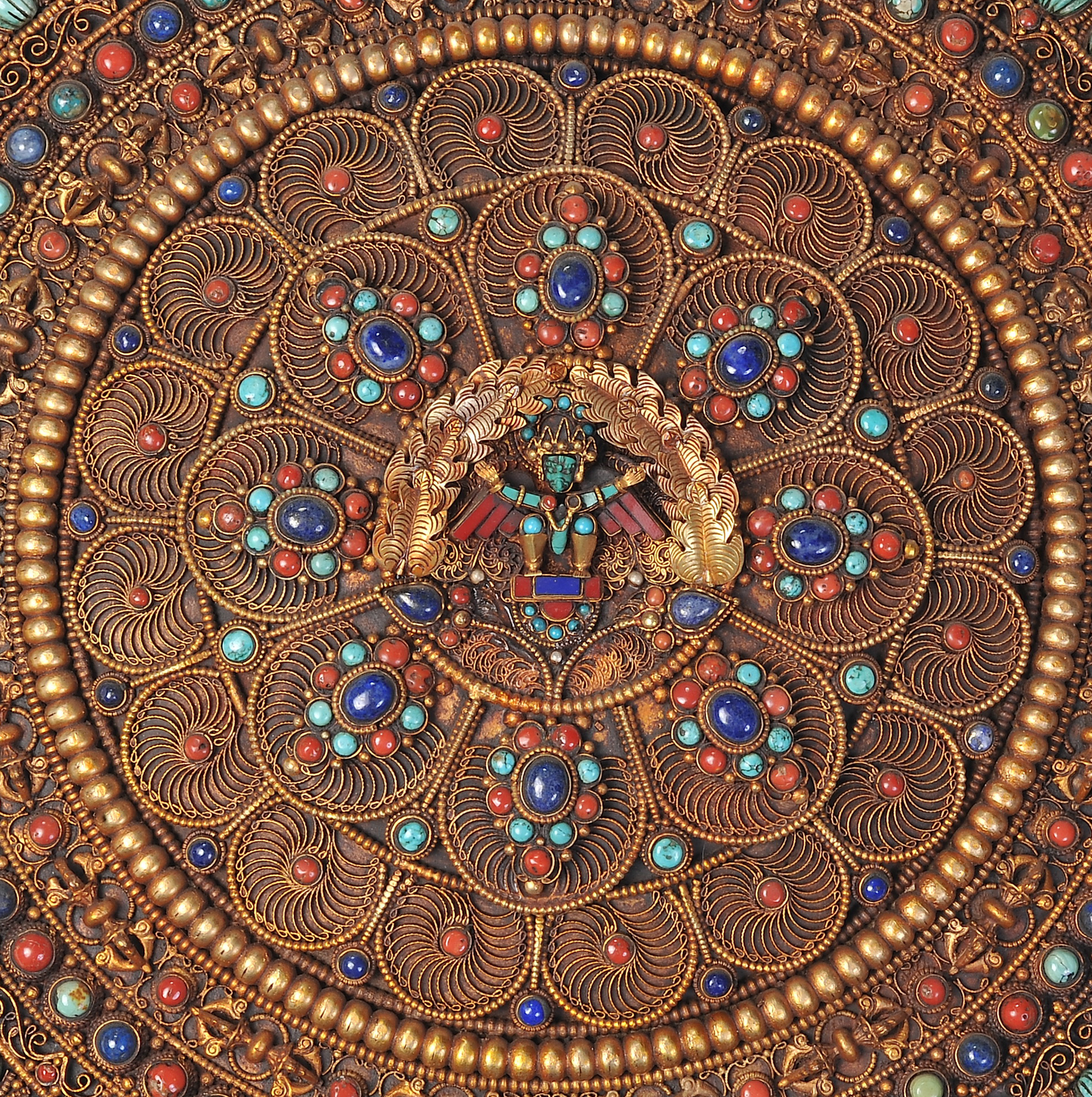SUMMER SPECIAL 25% OFF at Checkout
Wall Hanging Filigree Mandala with Tibetan stones
Wall Hanging Filigree Mandala with Tibetan stones
无法加载取货服务可用情况
Unique handcrafted Filigree Mandala with Garud in the middle and Tibetan Stones embellishment. A great wall hanging for your home!
These beautiful mandalas take over a year to finish. The filigree work is a delicate adornment in which fine, pliable threads of metal are hand twisted or curled into a design and then soldered. As you can see these designs take the shape of gorgeous scroll-work, lacy flourishes, and symmetrical Art-Deco style designs.
In various spiritual traditions, mandalas may be employed as a spiritual guidance tool, for establishing a sacred space and as an aid to meditation and trance induction. But today, the geometric configuration of symbols that make a mandala also make them a beautiful wall hanging for our homes.
Garuda, in the middle, is the legendary bird or bird-like creature in Hindu, Buddhist and Jain faith. He is variously the vehicle mount of the Hindu god Vishnu, a dharma-protector and Astasena in Buddhism, and the Yaksha of the Jain Tirthankara Shantinatha. Garuda's links to Vishnu – the Hindu god who fights injustice and destroys evil in his various avatars to preserve dharma, has made him an iconic symbol of king's duty and power, an insignia of royalty or dharma. His eagle-like form is shown either alone or with Vishnu, signifying divine approval of the power of the state.
Brief history of Mandalas - As Buddhist monks travelled the Silk Road, an ancient network of trade routes that connected the East and West, they brought Buddhism to other lands. They carried mandalas with them and brought the practice of painting these spiritual compositions to other parts of Asia, appearing in regions such as Tibet, China, and Japan by the 4th century. Though rooted in Buddhism, mandalas soon became present in Hinduism and other religious practices. Painters of the spiritual craft were often pious laymen, who were commissioned by a patron. They worked seated on the floor with a painting propped in their laps or in front of their crossed legs.
Share





